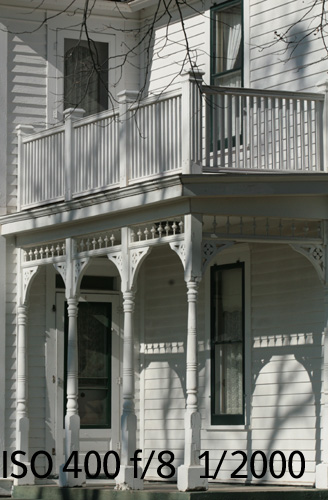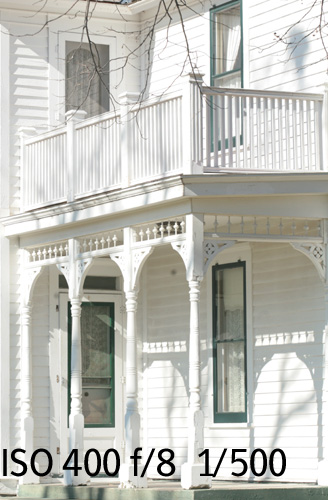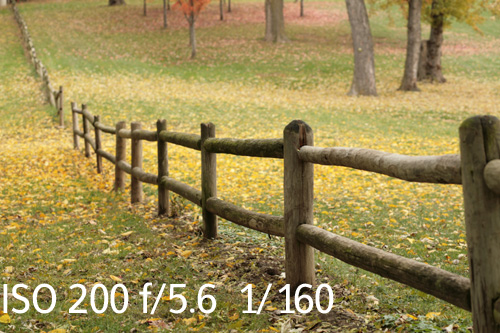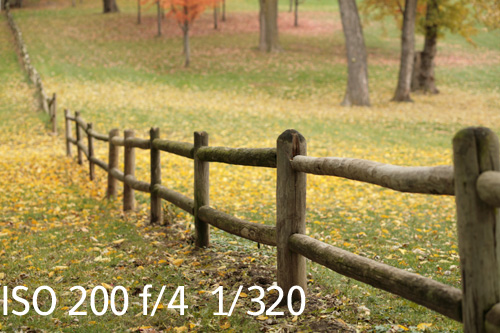An exposure is simply a reflection of the ISO, aperture, and shutter speed used to take a given photograph. For any given aperture setting for a scene, there is a set amount of time the shutter needs to remain open for a good exposure. The smaller your aperture, the longer your shutter speed. The wider your aperture, your shutter speed can be very high.
Generally speaking a good exposure shows highlight detail (details in the brightest parts) and shadow detail (detail in the darkest parts) in an image.
Each camera has a light meter, which measures how much light is reflected off of your subject and into the camera. The camera’s meter displays a graph based on the ISO you have selected. By adjusting the aperture and shutter, based on what you want to accomplish, the meter moves to the middle showing proper exposure.
When too much light (called over exposure) is allowed, the bright areas of the image have no detail and the darkest parts of the image become lighter shades of black. When there isn’t enough light (under exposure), the opposite happens, the bright areas become gray and the darker areas become black with no detail.
A few examples: Good exposure.

Under exposure. Notice how the white siding on the building has turned gray.

Over exposure. Notice how the white wall has no detail in it.

Both the over exposure and under exposure examples are off by one stop (one full setting away).
Equivalent Exposure:
For any given photograph there are many different exposures that are all acceptable. All acceptable settings for a given scene are called equivalent exposures. If you let a little bit of light through the aperture you need to let more light through the shutter speed to compensate. Move both setting in opposite directions to reach equivalent exposure. You can use this idea to accomplish what you want with your aperture and shutter settings. If you want a lot of depth of field, set the aperture to f/16 or so, and you’ll have the shutter open for a long time. If you want to stop someone running, a high shutter speed would balance with a wide aperture, f/2.8 or so.



